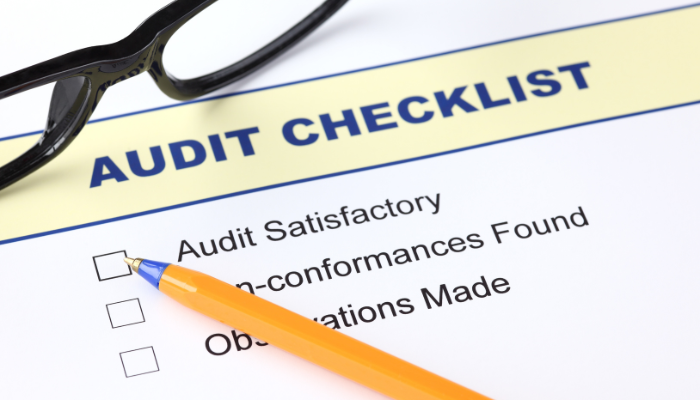
Running a small business has never been simple, and in today’s economy, managing cash flow can feel like a full-time job on its own. Whether you’re just starting out or a few years in, one of the biggest hurdles for many entrepreneurs is getting access to credit, especially when things get tight.
The challenge isn’t just about borrowing money. It’s about building the kind of credit history that opens doors to better terms, more flexible financing, and long-term stability. And while there are more tools and resources available today than ever before, not all credit is created equal. That’s why understanding how business credit works and how to build it strategically can give your company a stronger financial foundation and more room to grow.
Establishing Credit for Your Small Business
Before you can access meaningful business credit, you need to lay the groundwork. Lenders and vendors want to see that your business is responsible and reliable, and that starts with the basics.
The simplest way to begin building credit is to pay every bill on time. It sounds obvious, but consistent, timely payments to service providers, utility companies, and even office supply vendors help establish a positive track record. These early relationships can serve as informal credit references and, over time, become part of your business’s formal credit profile.
Today, tools like business credit monitoring services and integrated accounting platforms make it easier to track your payment history and ensure nothing slips through the cracks. Think of it like building trust one payment at a time. The sooner you start, the better positioned your business will be when bigger opportunities or unexpected expenses arise.

Start with a D‑U‑N‑S Number and Other Business IDs
One of the first steps in building strong business credit is making sure your business is properly registered and recognized as a separate entity. That starts with getting a D‑U‑N‑S Number from Dun & Bradstreet. It’s a unique identifier for your business, and many lenders, vendors, and credit bureaus use it to track your credit activity.
Along with a D‑U‑N‑S number, you’ll also want to have an Employer Identification Number (EIN) from the IRS. This acts like a Social Security number for your business and is required when applying for most forms of business credit. Depending on where your business operates, state registrations or business licenses might also be needed.
Why does all of this matter? Because building business credit means proving that your company is its own legal and financial entity. Without these formal registrations, it’s easy for your personal and business finances to get mixed up, and that can hurt your credit profile in the long run.

Leveraging Trade Credit with Suppliers
One of the most practical ways to build business credit is through trade credit, especially with suppliers who report payment history to business credit bureaus. When you set up accounts with vendors that allow you to buy now and pay later, typically on net-30 or net-60 terms, you’re creating a financial footprint.
Not every supplier reports to credit agencies, so it’s worth asking upfront. The more on-time payments you make with reporting vendors, the stronger your business credit profile becomes. These relationships don’t just help with cash flow; they also demonstrate to lenders and future vendors that your company is trustworthy and manages obligations responsibly.
This step is especially effective for newer businesses because it doesn’t require large loans or complex underwriting. Just consistent, responsible use.

Choosing the Best Kind of Credit for Your
Once your business is ready to start applying for credit, the next step is figuring out what kind of financing makes the most sense for your needs. Not all credit options are created equal, and what works for one business might not be the best fit for another.
Some owners start with a business credit card to separate personal and business spending, while others look to bank loans for funding larger investments like equipment or expansion. Then there are supplier credit lines, which can help manage inventory and cash flow by allowing you to delay payments without interest.
Each option has its strengths. A term loan might suit you if you're looking to fund a long-term project or make a big purchase. A revolving line of credit can give you more flexibility for seasonal needs or unexpected costs. And vendor credit is often one of the easiest ways to build a payment history, especially if you’re just getting started.
The right choice depends on your current cash flow, the timing of your needs, and your long-term financial plans. In some cases, you may also want to explore non-traditional funding options that supplement credit without adding new debt. The goal is to match your financing strategy with how your business actually operates.

Why Business Credit Matters
Strong business credit opens doors. It can help you make essential purchases, cover short-term gaps in cash flow, or seize new opportunities without scrambling for funds. Whether it’s buying inventory, upgrading equipment, or investing in growth, having credit available gives your business more flexibility and stability.
But it’s not just about borrowing. Business credit also smooths out day-to-day operations. For example, using a business credit card for purchases allows you to track spending, manage cash flow, and simplify bookkeeping. Many providers now offer detailed statements that make tax time far easier.
Just as important, good credit enhances your reputation. Vendors, lenders, insurance providers, and even potential partners may review your credit profile before extending terms or making decisions. A strong history of timely payments tells them your business is trustworthy.
Building that credit takes time, consistency, and strategy, but it’s one of the most valuable financial assets your company can develop.

Monitoring Your Business Credit Regularly
It’s not enough to build credit; you need to keep an eye on it. Regularly checking your business credit reports from agencies like Dun & Bradstreet, Experian, and Equifax can help you spot inaccuracies, track progress, and identify potential red flags early.
Staying informed gives you the opportunity to dispute errors, make strategic improvements, and better prepare for funding conversations. Many credit monitoring tools now offer real-time alerts and simple dashboards, making it easier than ever to stay on top of your financial reputation.

Correcting Errors & Staying Audit-Ready
Even with the best credit habits, errors on your business credit report can happen, and they can hold you back. That’s why it’s important to review your credit reports at least once a year. Look for incorrect late payments, outdated account statuses, or listings that don’t belong to your business.
If you spot something wrong, don’t wait to act. Each credit bureau has a process for disputing errors, and the sooner you begin, the sooner your profile reflects the accurate picture. Keeping your credit data clean isn’t just about your score; it’s about trust.
Lenders, vendors, and insurers may use this data to assess risk. So, having clear, up-to-date, and accurate records helps ensure you’re not penalized unfairly. Think of it like checking your business health record; routine upkeep goes a long way.

How Small Business Credit Can Benefit Your Company
Building business credit isn’t just about qualifying for loans. It’s about giving your business the breathing room and flexibility it needs to operate smoothly, especially when cash flow is tight.
With strong business credit, you may be able to make essential purchases, cover short-term gaps, or invest in opportunities without leaning on personal finances. It also helps when it comes to negotiating with suppliers, qualifying for insurance, or applying for leases and rentals.
Good credit can even streamline your internal processes. Running your business expenses through a dedicated credit account creates a clear paper trail, saving time when reconciling accounts or filing taxes.
While it does take time and consistency to build a solid credit profile, the long-term benefits are worth it. A healthy credit history can reduce financial stress, strengthen resilience, and help position your business for sustainable growth.

Closing Thought
Building strong business credit isn’t a sprint, it’s a strategic journey. By starting early, paying vendors on time, choosing credit wisely, and staying vigilant about your credit reports, you're not just qualifying for financing; you’re strengthening the foundation of your business.
Think of your credit profile as a signal of trust and stability. Strong credit unlocks flexibility, whether it's accessing better loan terms, smoother vendor relations, or quicker approvals for leases and insurance.
Keep going. A well‑managed credit history today becomes the springboard for tomorrow’s opportunities.
*Originally posted November 16, 2012 · Revised for accuracy and relevance in June 2025















